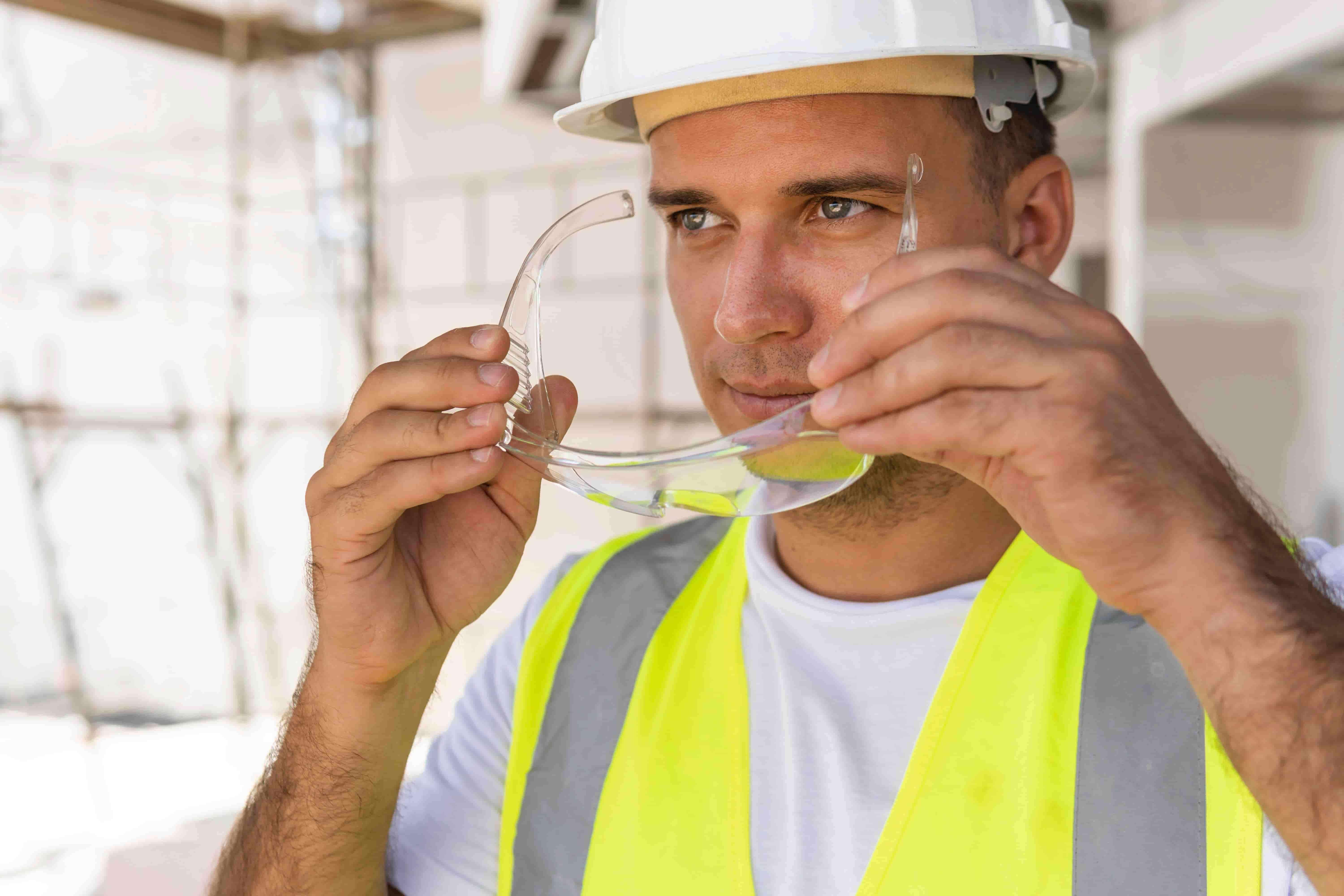
Do you know that 20,000 eye injuries occur in the workplace in the United States every year? This data shows that ignoring eye safety at work can potentially affect the personnel and the entire organization.
The consequences of eye injuries are severe and can cause irritation, traumas, eye strain, and even complete vision loss. Thus, observing simple safety rules at the workplace is important in terms of productivity.
The reports show that injuries suffered by workers lead to increased medical costs and potential legal issues. For example, the data by the U.S. Occupational Safety and Health Administration (OSHA) says eye injuries in the workplace cost $300 million annually when it comes to medical treatment, worker compensation, and lost productivity.
However, most traumas can be prevented with the help of modern equipment and software tools that minimize the risk of hazards in the workplace. This article will explore the importance of eye protection and effective preventive measures.
Understanding Eye Hazards in the Workplace
Thousands of employees working in various industries risk sustaining serious eye injuries every day. Sharp edges, radiation, chemical splashes, contaminated dust, or high-intensity light sources may be a cause of an accident that could have been prevented with the proper use of protection.
Although each industry has its own safety rules, employers should spare no effort to provide appropriate personal protective equipment (PPE) to minimize the risks. In addition, over 100 of these traumas result in a day away from work which affects the company’s productivity and standard workflow.
Thus, employers have to undergo training in how to recognize the potential hazard and implement preventive measures. The culture of a safe work environment and reporting about incidents in a timely manner will also reduce the risk. Therefore, occupational organizations in various countries provide guidelines containing eye safety tips at work.
Common Types of Eye Hazards
It is obvious that some jobs are more risky with more than 60 percent of eye injuries in the workplace falling on construction and manufacturing industries. However, potential eye hazards can affect people working in hospitals, laboratories, and offices.
Small metal, wood, dust, and concrete particles during high-risk activities in manufacturing, electrical jobs, construction, or plumbing can irritate or scratch the eyes. Moreover, in some cases, the penetration of certain objects like staples, particles of wood, or metal cause permanentan eyeball.
UV radiation burns are typical for welders and their assistants and can produce an eye injury called “arc eye”. Just a few seconds of intensive radiation, when a person is at an improper distance from the welding arc and is not wearing protective equipment, will result in pain and abnormal sensitivity to light.
Meanwhile, healthcare providers face the risk of being infected via ocular exposure because of touching the eyes with contaminated hands.
The workers of the offices usually sit in front of the computers for hours and are exposed to chronic eye strain. Doctors describe it as a digital eye strain or Computer Vision Syndrome caused by extensive use of laptops and other gadgets. One of the sources of this condition is also improper blinking rate leading to the development of the dry eye.
Potential Eye Injuries and Consequences
Avoiding the consequences of potential eye trauma is essential for a safe work environment at the construction site, in a laboratory, or in the office. Understanding the potential hazards and consequences is crucial for preventive measures to manage the risks to the workers.
There are several typical injuries when one does not comply with eye safety at work:
- Foreign body injuries
- Corneal abrasion
- Thermal or chemical burns
Small particles cause irritation, redness, and discomfort or even damage the structure of the eye. Therefore, once you feel sharp pain followed by burning and irritation, consult a doctor to avoid infection and scarring.
A scratch on the front surface of the eye as a result of dirt, wood shavings, plant matte, metal particles, or dust is called a corneal abrasion, a condition requiring immediate medical aid not to develop into an open sore. The doctors recommend rinsing the eyes with water and blinking several times before being checked by a professional.
Chemical burns usually occur when a liquid or powder chemical contacts the eye splashing over the face. This causes severe pain, blurred vision, and in some cases even vision loss depending on the chemical and the degree of exposure.
Eye Safety Regulations


Organizations dealing with occupational health publish eye safety tips in the workplace in the format of guidelines and recommendations.
OSHA is a federal agency in the United States responsible for safeguarding worker health and safety, including eye protection. The organization enforces standards and working conditions for each industry and requires employers to use eye and face protection in case of the probability of getting trauma. One of the general standards contains specific provisions on eye and face protection urging businesses to use the necessary equipment and conduct regular hazard assessments.
As mentioned above, employers pay millions in medical bills, time off, and compensation because of not complying with safety regulations. Besides the compulsory eyewear, the workplaces must have engineering control at the site, including machine guards, works screens, and cautionary signage.
Eye strain prevention and creating the right ergonomics are also among the key issues OSHA is dealing with. The agency offers tips on setting up a workstation with a monitor at a proper distance to minimize awkward position, eye strain, and excessive fatigue.
6 Tips to Create an Eye-Safe Work Environment
The violation of eye safety rules can be severe enough to cause long-term damage to health. Safety must be a priority for employers as workplace hazards can be costly for businesses.
In addition to protective equipment and elimination of hazards, an ergonomic environment, techniques for eye relaxation, and taking regular breaks from computer screens are essential to promote a healthy lifestyle for the workers.
1. Providing Proper Training and Education to Employees
Employers have to raise awareness about eye hazards in the workplace by introducing effective training programs for employees. The training course includes the basics of eye safety and recognizing the potential areas where a person can get hurt.
Of course, the training should focus on prevention techniques, also covering the use of first aid in the workplace in case of emergencies and maintenance of protective eyewear. A number one task is to identify the hazards specific to their industry to learn how to deal with flying objects, chemicals, or radiation.
The next move is to train how to select, wear and maintain protective equipment. Additionally, the training must cover information about the warning signs and the necessity to obey them in the workplace.
Besides, if there is a risk of exposure to chemicals, the employers must ensure there is approved emergency eyewash equipment and train the staff to provide the first eye in the event of an eye injury.
2. Personal Protective Equipment (PPE) for Eye Safety
The types of eyes and face protection you need in the workplace depend on the industry and the hazards an employee might face. What can you use to protect your eyes from impact hazards? We will brief you on the main standard PPE used to provide eye safety at work.
Safety Glasses: Standard safety glasses are the minimum level of eye protection. Typically made with shatter-proof lenses, they must have side shields or a single-piece lens to provide complete coverage. However, those would not protect from splashes.
Safety Goggles: Fit tight and completely cover the eyes to protect them from splashes of chemicals or infectious substances, dust, and debris. These glasses will also protect from airborne particles and vapor.
Face Shields: Equipment is effective in conjunction with safety goggles and is required to protect from chemical damage to the skin. They are also worn during activities with a risk of UV radiation, extreme heat, and arc flash.
In addition, it is important to observe storage and care rules to prevent scratching and damage to PPE.
3. Setting up an Ergonomic Home Office Environment
With many people shifting to working from home after the pandemic, it is crucial not to ruin health because of the lack of an ergonomic environment. The surveys show around 27% of U.S. workers were working remotely in September 2022. Although the reports show working from home can produce better turnaround on projects, many complain about not having a designated workspace.
Setting up an ergonomic workstation is crucial for productivity and healthy habits. First, it’s necessary to start with an adjustable chair and desk to maintain good posture and prevent back pain, and eye strain. The height of the chair and desk should allow for comfortable typing and proper distance from a monitor.
Blue light from computers and gadgets leads to eye strain that may cause discomfort and long-term vision problems. Therefore, it’s helpful to use the most new technology solutions when struggling with ergonomic hazards.
Meanwhile, science-backed approaches used by modern applications can prevent these issues. For example, Bliink trains a user to track and control the blinking rate and keep an appropriate distance from a monitor. An AI-powered solution helps improve eye health and correct posture to be more productive and minimize the impact on eye health.
4. Creating a Clutter-Free Workspace and Organizing Cables
Have you ever thought that piles of papers and unnecessary things on your desk impact the workflow? Disorganized workspaces deteriorate concentration and prevent them from achieving maximum efficiency. Keep everything within your arm’s reach as spreading out over your desk to grab a pen or a notebook all the time may cause back pain. By maintaining a clutter-free workspace and keeping small items in order, you can save time searching for items and improve the focus on the task.
It is also necessary to organize the cables and hide the tangled and messy ones in the workplace not to pose a risk to the employees. There are several ways to hide them away such as using cable clips, floor covers, and zip ties. Proper management extends the life of the equipment and subsequently reduces maintenance costs.
5. Encouraging Breaks and Eye Exercises Throughout the Workday


With more time spent in front of the screen, employers need to raise awareness about eye care and the importance of addressing any eye discomfort in due time. It is also a part of the prevention mechanism that will safeguard eye health and ensure the long-term well-being of an employee.
A small but effective eye safety tips at work include practicing eye exercises during the day. One of the most effective remedies is palming, gently cupping the hands over the eyes to reduce fatigue and prevent eye strain. Meanwhile, a 20-20-20 rule used to give eyes frequent breaks every 20 minutes helps relax eye muscles.
Coupled with these exercises, frequent blinking is also an essential technique to clean and moisten the surface of the eye. Here you can use an application that would remind you of blinking more often.
6. Practicing Techniques for Eye Relaxation
Taking a regular break from the blue light and using eye relaxation exercises are among the key safety tips for computer users. The impact of computer screens tires out our eyes and the surrounding muscles.
Focusing on distant objects will prevent eyesight from getting worse. Point your finger in front of you and try to focus on it and suddenly switch the focus to a wall or an object behind. Another option is to visualize a big 8 at a distance and try to sketch it with your eyes for several minutes. If done regularly, these exercises would improve eye vision and maintain eye health naturally.
Conclusion
Creating a safe environment at work includes training employees on potential hazards, providing necessary equipment, and suggesting efficient techniques and tips to ensure eye safety.
The same applies to self-employed or remote workers who want to maintain a good posture, avoid eye strain, and minimize the impact of the extensive use of computer devices. The software solutions like Bliink are not costly yet effective tools for promoting productivity and helping prevent eye fatigue. With its helpful features, one can stay focused on tasks and simultaneously improve digital health.
